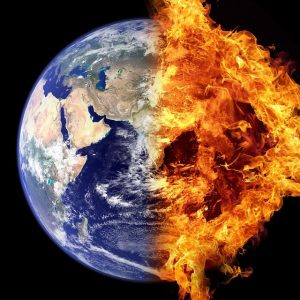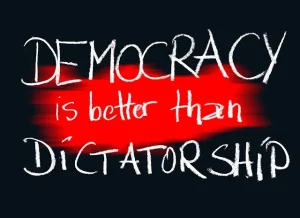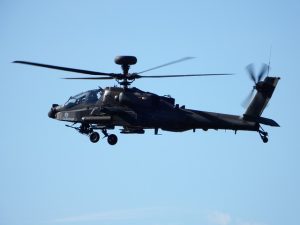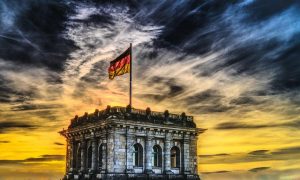【後編】ドイツの参戦姿勢とNATOの覚悟—— ヨーロッパはどこへ向かうのか?
 イメージ
イメージ
【後編】ドイツの参戦姿勢とNATOの覚悟——
ヨーロッパはどこへ向かうのか?
湾岸戦争と「後方支援」というジレンマ
1991年の湾岸戦争。当時の私は、連日の報道をテレビの前で見つめながら、
ある違和感を抱いていました。
それは「ドイツの立ち位置」でした。
冷戦終結直後、統一を果たしたばかりの新生ドイツは、
NATOの一員として中東の危機に関与するべきか否か、深く葛藤していたのです。
最終的にドイツは、トルコへの後方支援という形で部隊を派遣しましたが、
前線での戦闘には参加しませんでした。
戦闘行為そのものを避けるという姿勢は、戦後の「平和国家ドイツ」を象徴するものであり、
多くの国民もそれを支持していました。
しかしその一方で、アメリカやイギリスなどの同盟国からは
「経済的には大国だが、国際的な安全保障に対して責任を果たしていない」
との批判も噴出しました。
軍事的義務と平和主義との間で揺れる姿は、あの時のドイツの「限界」
を浮き彫りにしたと言えるでしょう。
そして今、ドイツは「前線に立つ覚悟」を見せた
あれから30年以上が過ぎ、ドイツはかつてない岐路に立っています。
ロシアのウクライナ侵攻が長期化し、欧州の安全保障構造が根底から揺らぐ中で、
ドイツ政府はついに、提供兵器の「対ロシア本土攻撃容認」という歴史的決断を下しました。
この変化は、「後方支援」にとどまっていた過去の姿からの脱却を意味します。
そしてそれは、単に戦術レベルの話ではなく、
「世界秩序の中でドイツがどのような役割を果たすのか」という、
もっと根源的な問いに向き合う覚悟の表れでもあるのです。
フランスとイギリスも「対ロシア戦線」に本格関与へ
このドイツの転換に呼応するように、NATOの中核国であるイギリスとフランスも、
従来以上に積極的な軍事支援を行い始めています。
イギリスは、初期からウクライナに兵器や訓練支援を提供してきましたが、
2025年に入り、特殊部隊の派遣を検討しているとの報道もあります。
また、情報面での協力や、NATO加盟国との緊密な連携強化も進められています。
フランスでは、マクロン大統領が「ヨーロッパの防衛は、ヨーロッパ自身が担うべき」
と繰り返し主張。
かつては慎重だった武器供与にも踏み込み、
今ではウクライナに直接的な軍事支援を行う国の一つとなっています。
こうした動きの中で、ヨーロッパは明らかに「防衛の主体」から
「攻撃の関与」へと立ち位置を変えつつあります。
もはやNATOの枠組みは「抑止のための同盟」ではなく、
「実動的な軍事連携ネットワーク」として機能し始めているのです。
 イメージ
イメージ
「歴史は繰り返すのか」という問い
ドイツの軍事的な姿勢の変化を見たとき、私は再び30年前に出会った
あの英字新聞のコラムを思い出しました。
「Germany: Has Pandora’s Box Been Opened?
(ドイツはパンドラの箱を開けてしまったのか?)」
当時は、ドイツ再統一とベルリン遷都に伴う象徴的意味合いを懸念した記事でしたが、
今改めてその表現が胸に響きます。
戦後ずっと「戦争をしない国」であることを国是としてきたドイツが、
世界の安全保障の「現場」に立つ時代。
その先に、何が待っているのでしょうか。
パンドラの箱を開けたその先に、最後に残るものは「希望」だと神話は語ります。
しかし、それはただ黙って待つものではなく、
主体的に掴みに行かなければならないものでしょう。
世界は今、再び「東西の分断」の只中にある
現在、世界は再び「東西の分断」が顕在化しつつあります。
一方ではアメリカ・EU・日本などの西側諸国がウクライナ支援を継続し、
他方では中国、イラン、北朝鮮といった国々がロシアとの連携を強めています。
経済制裁と供給網の分断、AIや量子技術をめぐる技術覇権争い、
そして核兵器を含む安全保障リスクの高まり。
これらの動きは、単に地域的な緊張にとどまらず、地球規模の対立構造を浮き彫りにしています。
 イメージ
イメージ
私たちにできることは何か
こうした混迷の時代において、
私たち一般市民にできることは決して多くはないかもしれません。
しかし、無関心でいることだけは避けるべきでしょう。
戦争は、遠い国の話ではありません。
ヨーロッパという「かつての戦場」が再びきな臭くなる今、
日本もまた無縁ではいられないのです。
自国の外交、安全保障、そして歴史認識について、
私たち一人ひとりが関心を持ち続けること。
それこそが民主主義の根幹であり、次の世代への責任なのだと思います。
歴史を直視し、そこから学び、冷静に未来を見据えること。
それこそが、私たちに残された「希望」なのではないでしょうか。
 image
image
[Part II] NATO’s Shifting Posture and the Future of Europe —
In the Wake of Germany’s Military Turn
In the previous article,
I examined how Germany’s recent military decisions—
particularly the approval of long-range missile use in Ukraine—
signify a major departure from its postwar pacifist stance.
But Germany is not acting in isolation.
As the war drags on and tensions rise across Europe,
the entire NATO alliance appears to be undergoing
a strategic transformation.
NATO’s Growing Military Commitments
Since the start of the invasion,
NATO countries have worked to bolster their collective defense.
Beyond supplying weapons and financial aid to Ukraine,
member states have also increased their own military readiness.
Troop deployments along NATO’s eastern front—
from the Baltics to Poland—have grown significantly.
Joint military exercises are now held with greater frequency and scale.
Notably, Sweden and Finland—traditionally neutral countries—
chose to join NATO in response to the invasion.
Their decisions underscore the extent to which
Europe’s security environmenthas changed.
The concept of neutrality, once seen as a safeguard,
now appears increasingly untenable in the face of Russian aggression.
 image
image
A Shift in Public Opinion and Policy
This new reality is also altering public opinion across Europe.
For many years, a large portion of the European population held pacifist views,
shaped by memories of two world wars.
Military budgets were often kept low,
and some countries even questioned the necessity of NATO itself.
That sentiment has changed dramatically.
In Germany, for instance,
public support for increased defense spending has risen.
The so-called “Zeitenwende” (turning point)
declared by Chancellor Olaf Scholz in 2022—
signaling a historic shift in foreign and defense policy—
is now more than just rhetoric.
Germany’s military budget has seen a dramatic increase,
with long-term plans to modernize the Bundeswehr
(German Armed Forces) underway.
Similarly, other European nations are boosting their defense capabilities,
not just in terms of funding
but also through closer interoperability within NATO.
A New Era for European Security?
Still, this growing militarization raises complex questions.
Can NATO maintain unity as individual member states face
varying degrees of economic pressure and domestic political change?
How far should the alliance go in supporting Ukraine—
especially when direct conflict with Russia remains a dangerous possibility?
Moreover, the rise of far-right parties in some European countries
introduces additional uncertainty.
These groups often express skepticism toward NATO and
advocate for more isolationist policies.
How such trends will affect long-term security coordination
within the alliance remains to be seen.
What is clear, however,
is that Europe can no longer afford to rely on outdated assumptions about
peace and deterrence.
The war in Ukraine has served as a painful reminder that
military threats remain very real,
and that democracies must be prepared to defend themselves—
both materially and ideologically.
 image
image
Closing Thoughts: A Europe at the Crossroads
As we witness these sweeping changes,
I find myself reflecting not only on Germany’s transformation
but also on Europe’s broader identity.
Are we entering an era where military strength once again
becomes central to national identity and international legitimacy?
Or can Europe find a way to balance readiness with restraint—
to build a more secure, yet still fundamentally peaceful, continent?
The choices made in the coming years will shape
not just the outcome of the war in Ukraine,
but the future direction of Europe itself.
We stand, undoubtedly, at a historic crossroads.

